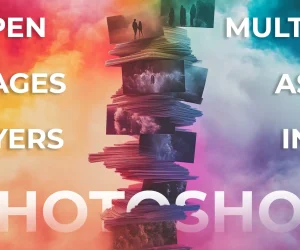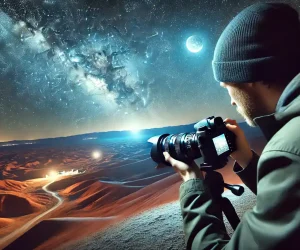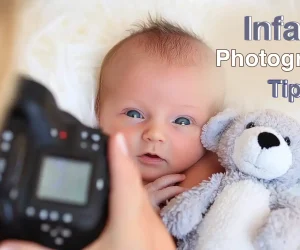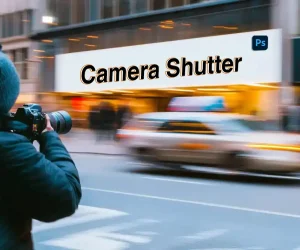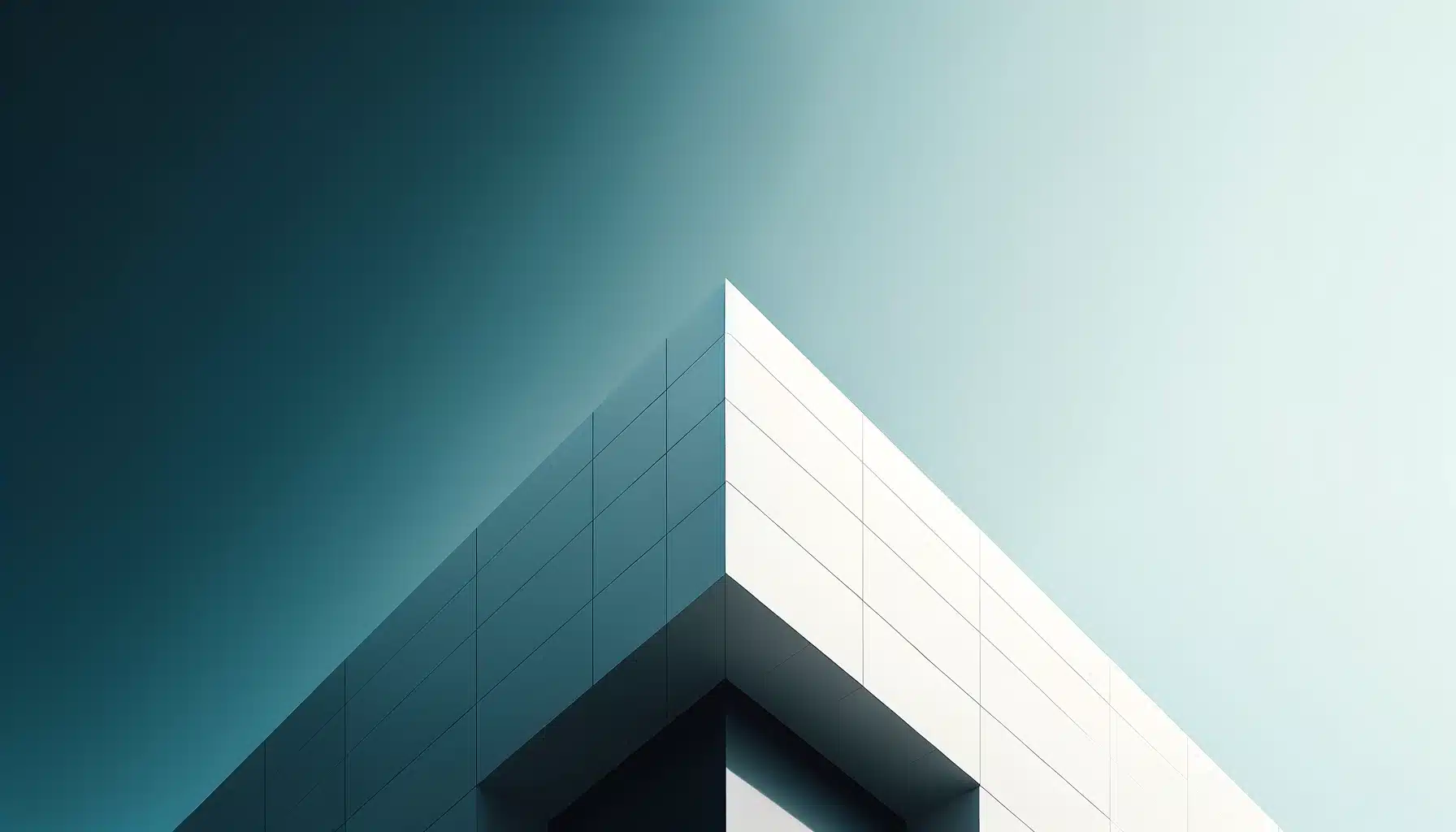
Introduction to Tips for Minimalist Photography
Minimalist photography is all about simplicity and focusing on the essentials. This style of photography teaches us that “less is more.” By using fewer elements, minimalist photos can make a strong impact without the clutter. The key to mastering this approach lies in understanding how to strip down a scene to its basic elements, emphasizing shapes, colors, and textures to tell a story or convey an emotion. By exploring Tips for minimalist photography, you can learn to create compelling photographs with limited elements, focusing on the beauty of simplicity that often goes unnoticed in our busy lives.
For instance, consider a photo of a single tree in a vast snowy field. The stark contrast between the white snow and the dark silhouette of the tree captures the viewer’s concentration instantly. There are no distractions, just the tree and the endless white canvas, showcasing the power of simplicity.
Table of Contents
Fundamentals of Minimalist Techniques
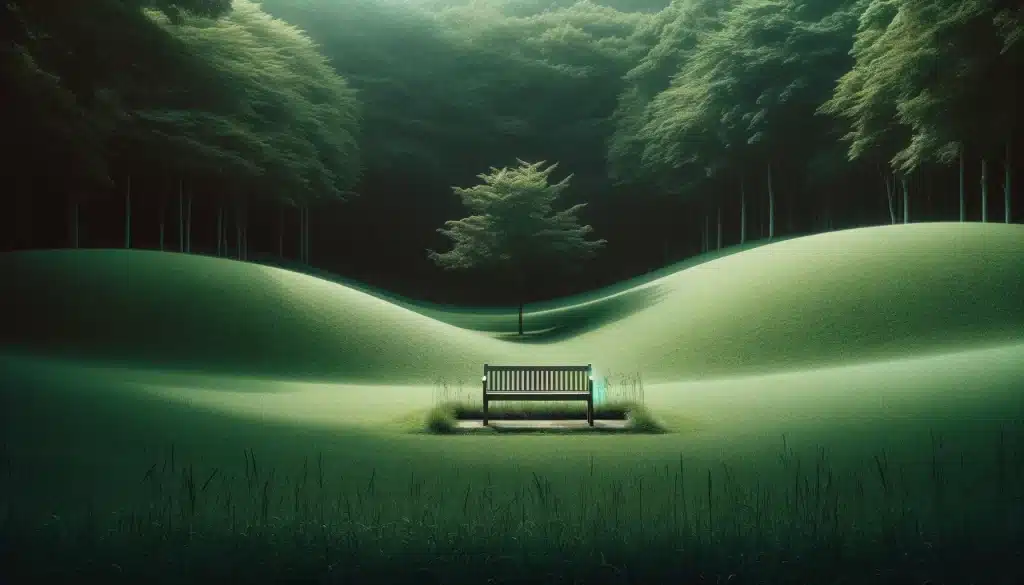
Choosing Your Subject Wisely
When it comes to minimalist photography tips, the choice of subject is crucial. A plain subject, like a lone bench in a park or a single window on a large plain wall, can dramatically convey solitude or peace. By selecting subjects that stand out against their surroundings, you emphasize their importance and the feelings they evoke.
Emphasizing Negative Space
Minimalist photography tips often highlight the importance of negative space — the empty area around and between the subjects. Utilizing a lot of open environment helps to draw the viewer’s eye directly to the main subject, which can make even the simplest subjects striking. This technique is especially powerful in conveying a sense of scale and isolation.
Playing with Colors and Textures
Minimalist photography guidance includes paying attention to the colors and textures within the frame. Using a limited color palette or basic textures can create a visually appealing image that stands out for its clarity and spotlight. plain, bold colors suit well to capture the viewer’s attention and keep the design clean and straightforward.
Psychology Behind Minimalist Photography
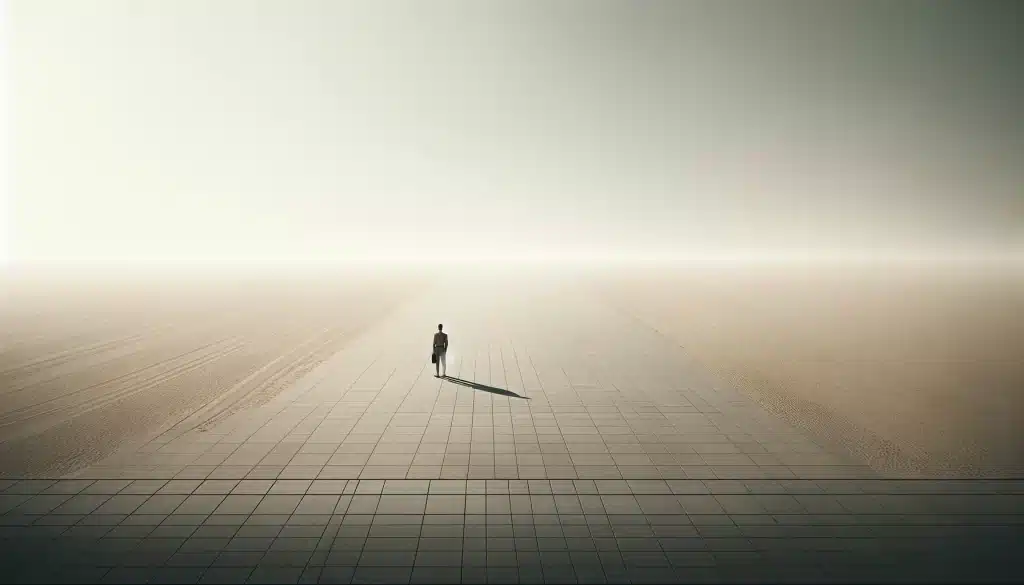
Clarity and Focus
Minimalist photo techniques help to clear the clutter not only in the frame but also in the observer’s mind. Simple photography allows for a clearer focus on the essential features, which can be soothing and calming. This clarity can help convey the main idea more effectively and leave a lasting impact.
Emotion through Simplicity
By using fewer elements, minimalist photography often evokes deeper emotions. A lone figure in a large zone can express loneliness or freedom. Simple photography uses slight distractions to enhance these emotional responses, making the audience more connected to the image.
Attraction to Order
Humans naturally find comfort in order and purity. Minimalist photography aligns well with this preference by offering structured and orderly compositions. This can make viewers feel more at ease and more drawn to an image.
Amplification of Details
With fewer elements, each detail in a minimalist photograph becomes more significant. This can make even small features, like a crack in a wall or the texture of a leaf, stand out and become part of the overall story or emotion of the picture.
Stimulating Imagination
Minimalist photography leaves more to the imagination, prompting viewers to fill in the blanks. This interaction can be very engaging, as it encourages viewers to think more deeply about what the picture represents or the story it tells.
Incorporating tips for minimalist photography into your occupation can transform how viewers perceive and interact with your photos, making even the simplest scenes resonate with profound meanings and emotions.
Key Principles of Composition in Minimalism
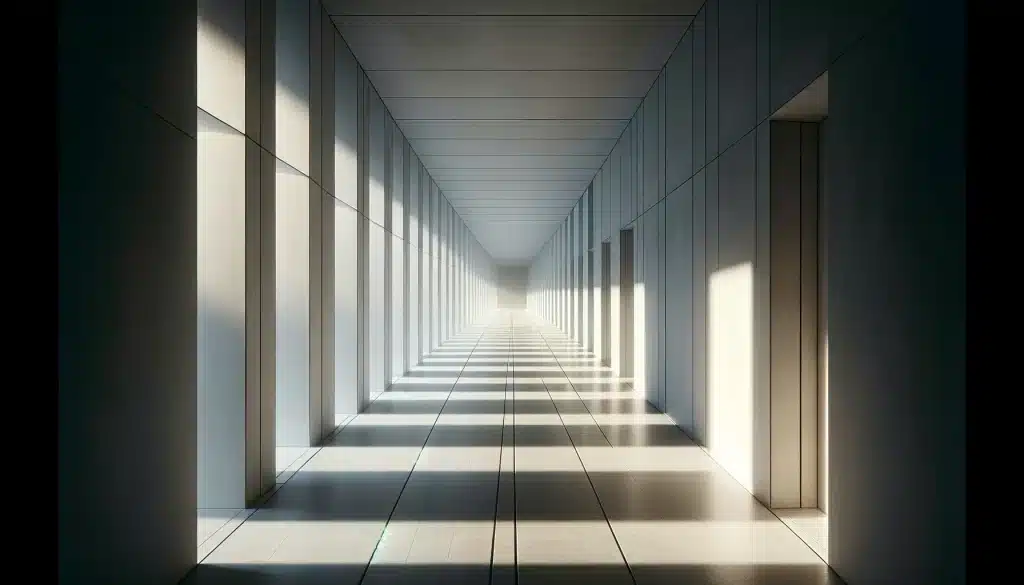
Use of Lines and Shapes
- Lines and shapes are the backbone of minimalist composition. They guide the viewer’s eye and establish the overall feel of the photograph.
- Straight lines can convey stability and order, while curved lines can add a sense of movement and softness.
- Experimenting with geometric shapes against a plain background can create intriguing contrasts and focal points.
Mastery of Light and Shadow
- Effective use of light and shadow can dramatically enhance a minimalist photograph. Brightness can highlight the main factors, while shadows can add depth and interest.
- Early morning or late afternoon illumination provides soft shadows and subtle textures, ideal for capturing the essence of minimalism.
- By playing with the angles of light, you can transform an ordinary subject into a compelling feature of your design.
Strategic Placement of Subjects
- Placing the object off-center according to the rule of thirds can make the setup more engaging and visually appealing.
- Minimalism thrives on the idea of isolation; placing the object in a vast area can emphasize its significance and evoke stronger emotional responses.
- Think about the negative space as much as the object itself. The environment around your object should balance the picture and draw attention directly to the intended focal point.
Simplification of the Scene
- Removing unnecessary components from the structure is crucial in minimalist photography. This simplification helps to highlight on the main object without distractions.
- Choose backgrounds that are clean and unobtrusive to ensure that nothing takes away from your subject.
- Advice for Simple Photography: always ask yourself what you can remove from the structure without losing the essence of what you want to convey.
Essential Gear for Minimalist Photography
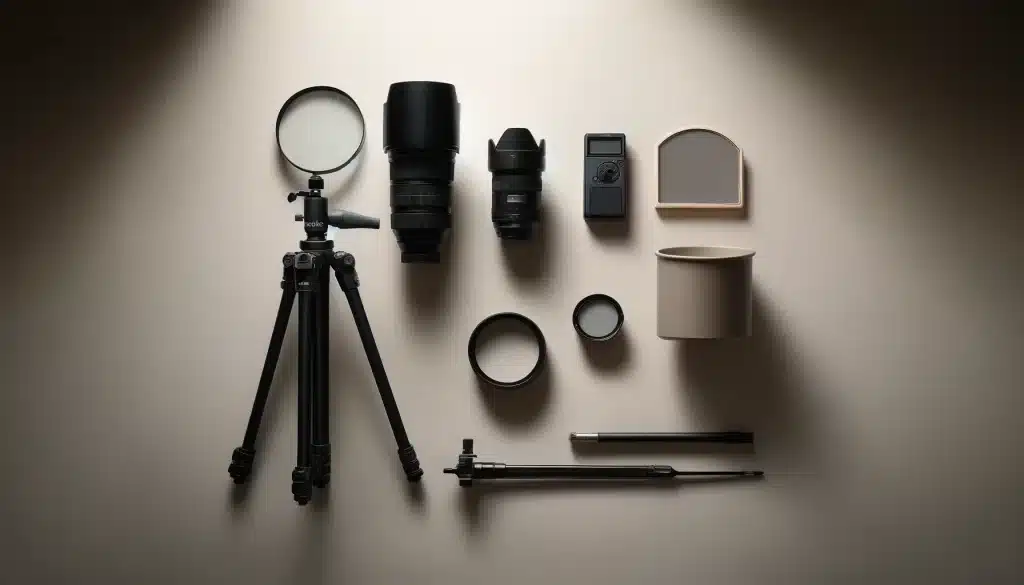
| Item | Purpose | Recommended For | Benefits | Considerations |
|---|---|---|---|---|
| Prime Lens | Sharp imagery and fixed focal | Portrait and street photography | High-quality images with less distortion | Limited flexibility in zoom |
| Tripod | Stability and precision | Long exposures and landscape shots | Consistent framing and sharp images | Can be cumbersome to carry |
| Neutral Density Filter | Control illumination intake | Outdoor and bright environments | Allows for longer exposures without overexposure | Different strengths for various lighting conditions |
| Remote Shutter | Reduce camera shake | Macro and low-light photography | Clear shots without touching the camera | Requires compatibility with camera |
| Reflectors | Enhance natural illumination | Portraits and product shots | Improve lighting without artificial sources | Need space to set up and adjust |
Pro Tip: Learn how to edit text portrait effects as well in order to enhance your workflow.
When learning how to do minimalist photography, choosing the right equipment is crucial to achieving the Basics of Minimalist Imaging. A prime lens is essential for its ability to produce sharp images with slight distortion, perfect for capturing the essence of purity. Tripods offer stability, which is particularly beneficial for capturing shots that require precision and crispness, such as in long exposures.
Utilizing a neutral density filter allows person to manage excessive illumination and achieve the desired blur in motion, crucial for outdoor photography. A remote shutter can be a valuable tool to avoid any camera shake, ensuring every detail is captured as intended in macro and low-light conditions. Lastly, reflectors are indispensable for managing brightness effectively, especially in natural settings, enhancing the quality of Simple photography without relying on artificial lighting solutions.
Tips for Minimalist Photography
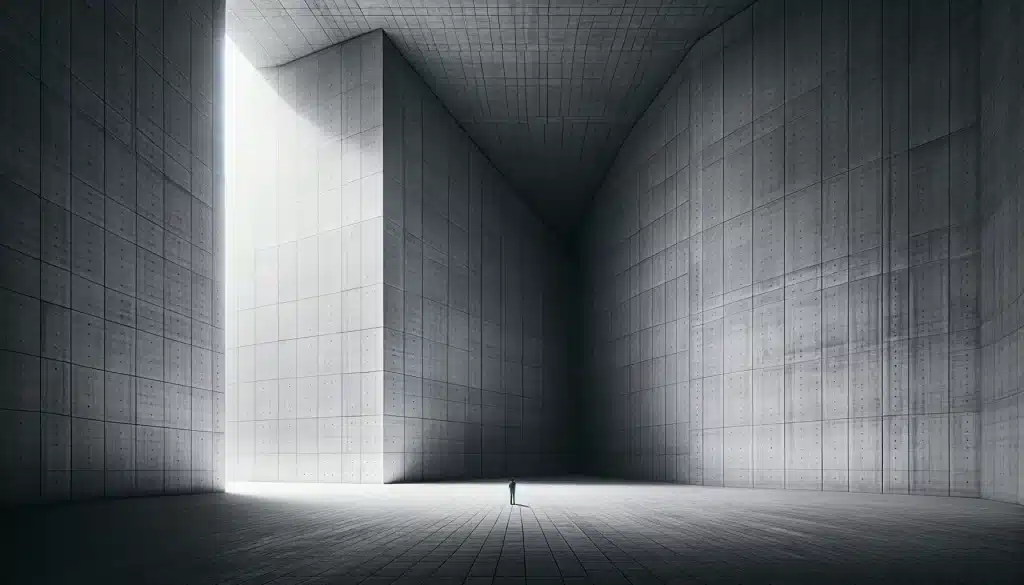
Enhance Composition with Negative Areas
- Instead of crowding your frame, consider the impact of negative areas that allow your subject to breathe. These open areas create a calm and focused scene, guiding the observer's eye directly to the subject without distractions.
Use Monochrome Tones
- Employing a monochrome palette can streamline your photo's impact. This technique reduces the visual noise in the photo and emphasizes the textures and details of your scene. Editing in Lightroom or Photoshop can help fine-tune these tones to achieve a crisp, impactful result.
Integrate Textural Contrasts
- Contrast isn't just about tonal differences; it can also be about textural contrasts. Pairing rough textures with smooth backdrops, for instance, can add a layer of depth to your work. This approach keeps the composition engaging yet retains a minimalistic feel.
Optimize with Photo Editing Software
- Utilize tools like PS to remove any unwanted distractions that were not eliminated during the shooting. This can include small objects that don't contribute to your overall formation or distracting minor imperfections in the background.
Experiment with Scale and Proportion
- Playing with the scale and proportion can yield intriguing results in the simplest photography. A tiny human figure against a vast architectural structure can transform the narrative of your photo, making the solitary subject the focal point.
Focus on Detail Isolation
- Isolating a single detail can tell a powerful story. Whether it’s a crack in a wall or the texture of a leaf, focusing on one small detail can encapsulate the essence of this photography. It’s about finding the profound in the mundane.
By embracing these tips for minimalist photography, you can create photos that are not only visually striking but also carry a calm, focused energy that is characteristic of the simplest style. Through careful composition, the use of monochrome tones, and strategic use of photo editing software, your assignment can stand out in its purest form.
Top Minimalist Photographers and Their Strategies
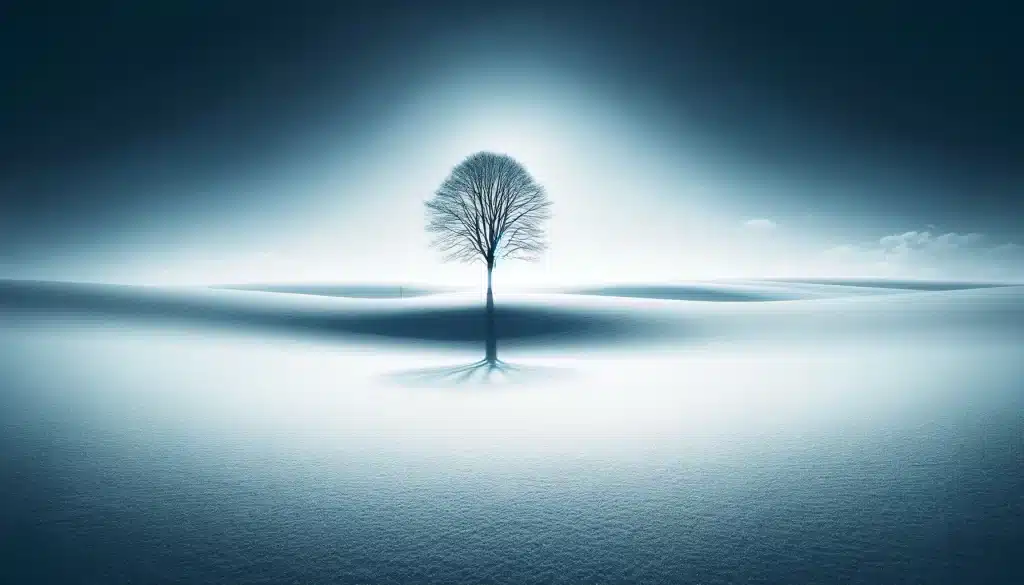
Exploring the role of top minimalist photographers can offer invaluable tips for minimalist photography, providing inspiration and practical insights into creating powerful visual narratives with less.
Michael Kenna's Advice for Simple Photography
Michael Kenna is renowned for his black and white landscapes that transform nature into a realm of tranquility. His work serves as a prime example of how to do minimalist photography by stripping scenes down to their core. Kenna’s photographs often feature natural scenes with minimal human presence, giving full credit to the art of nature itself.
Hiroshi Sugimoto's Tips for Minimalist Photography
Hiroshi Sugimoto’s photography is a study in the art of time and memory, captured through his long exposure techniques. His seascapes and architectural works are exceptional examples of minimalist photography tips in action, where the horizon blends seamlessly into the sky, offering a meditative take on nature’s vastness. His role teaches us that each perimeter can hold a deeper meaning, an ethos central to minimalist photography tips.
Ansel Adams's Minimalist Photo Techniques
Known for his black and white photography, Ansel Adams has been a monumental figure in photography, especially in how he captures the grandeur of landscapes. His meticulous approach to detail and his will to preserve the natural world through his objective have made him a key example in the realm of minimalist photography. His compositions, while often grand, maintain a focus that is tightly curated around the natural beauty.
Ruth Bernhard and Her Tips for Minimalist Photography
Ruth Bernhard’s contributions to minimalist photography are marked by her exceptional use of black and white to explore the human form and natural objects. Her achievement showcases a profound understanding of balance and organization and serves as an example of how minimalism can elevate a subject. Her dedication to the art form offers invaluable insights into minimalist photography tips, emphasizing how less can indeed be more.
These experts have not only advanced the field of minimalist photography but have also shown how powerful this style can be in communicating more with less. Their works continue to inspire photographers around the world, demonstrating that the strength of a photograph lies in its ability to convey emotion and narrative.
Steps for Creating a Minimalist Aesthetic in Your Photos
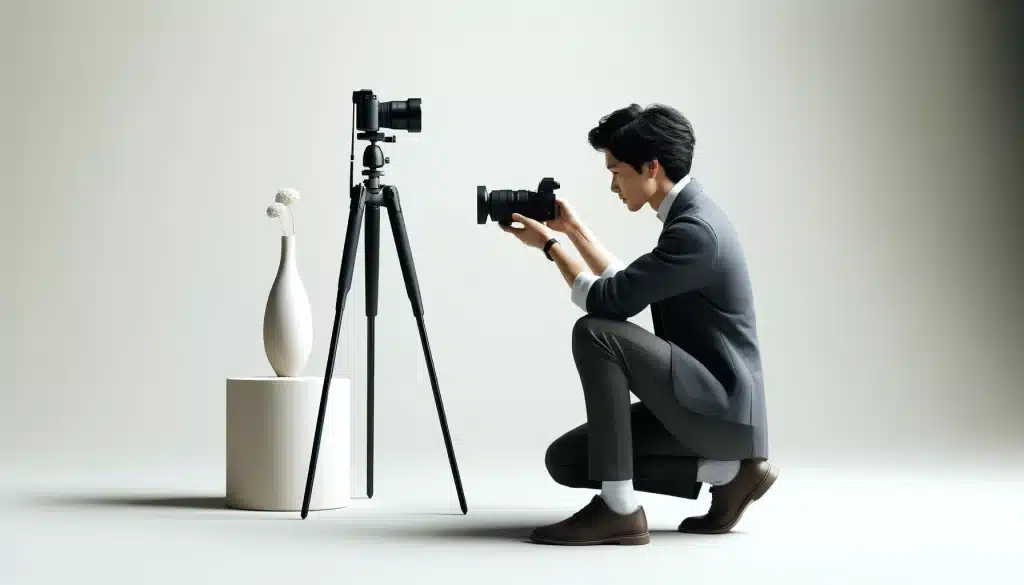
To achieve a distinct aesthetic in your visuals, start by selecting a clear focal point; this could be anything from a solitary architectural detail to a unique texture. This helps to anchor the observer’s concentration and sets the tone for the entire piece. Utilizing a monochrome palette simplifies the scene and keeps the audience from being distracted by varying hues, making your chosen detail pop even more.
Lighting plays a critical role. Natural light, particularly during the golden hours, offers softness and a natural contrast that can dramatize the clarity of your setting. Keeping the background free from clutter ensures that all concentration remains on the focal point, enhancing the overall impact of the visual. So, always these tips on photography lighting.
Lastly, subtle editing using tools like Lightroom can refine your visual, adjusting exposure and contrast to highlight the important features without overwhelming the plainness of the setup. These steps combined can elevate your job, providing clear, impactful results that embody the essence of Minimalist photography tips or simple photography.
| Step | Technique | Tool Needed | Effect Achieved | Tip |
|---|---|---|---|---|
| Choose a Focal Point | Isolate a single detail | Camera with a good lens | Enhances clarity and impact | Focus on simplicity |
| Opt for a Monochrome Tone | Apply a single hue | Editing software | Unifies the look, avoids distraction | Experiment with shades and contrasts |
| Use Ambient Illumination | Shoot during golden hours | None, just natural timing | Softens textures, reduces harshness | Plan shoots early or late in the day |
| Simplify the Background | Select uncluttered settings | Appropriate location scouting | Keeps the attention on the detail | Avoid busy environments |
| Edit for Perfection | Minimal adjustments | LR or similar software | Fine-tune contrast and exposure | Enhance only key details |
Choosing the Right Tools and Apps for Minimalism

When setting up your toolkit for crafting refined visuals, choosing the right software and applications is essential. Begin with a robust editing platform like Adobe PS, which allows for meticulous visual enhancements. This tool is vital for making precise adjustments that elevate the overall quality of your visuals.
For designs that require layout adjustments or vector manipulations, Adobe Illustrator is an indispensable tool. It provides the necessary capabilities to design and adjust visual elements effectively.
For those looking to apply a consistent aesthetic across their visuals, using an app like VSCO, known for its high-quality filters, ensures that each piece maintains a uniform style.
Lastly, implementing cloud storage solutions such as Google Drive or Dropbox is critical for the secure backup and easy access of your digital files, ensuring that you can work flexibly from any location.
These tools collectively support the process of crafting and managing your visual content efficiently, helping you maintain quality and consistency across your projects, an important practice for those following tips for minimalist photography.
| Step | Objective | Tool/App | Benefit | Usage Tip |
|---|---|---|---|---|
| Select Editing Software | Refine visuals | Adobe Photoshop | Enhances visual details | Use for precise edits |
| Choose Design Software | Layout and design adjustments | Adobe Illustrator | Provides layout and vector tools | Ideal for graphic compositions |
| Pick a Filtration App | Apply consistent aesthetics | VSCO | Offers high-quality filters | Good for maintaining a style |
| Use a Scheduling Tool | Organize and plan posts | Buffer or Hootsuite | Manages posting across platforms | Helps keep a consistent posting schedule |
| Implement Cloud Storage | Backup and access files remotely | Google Drive or Dropbox | Secures and stores digital files | Access your files from anywhere |
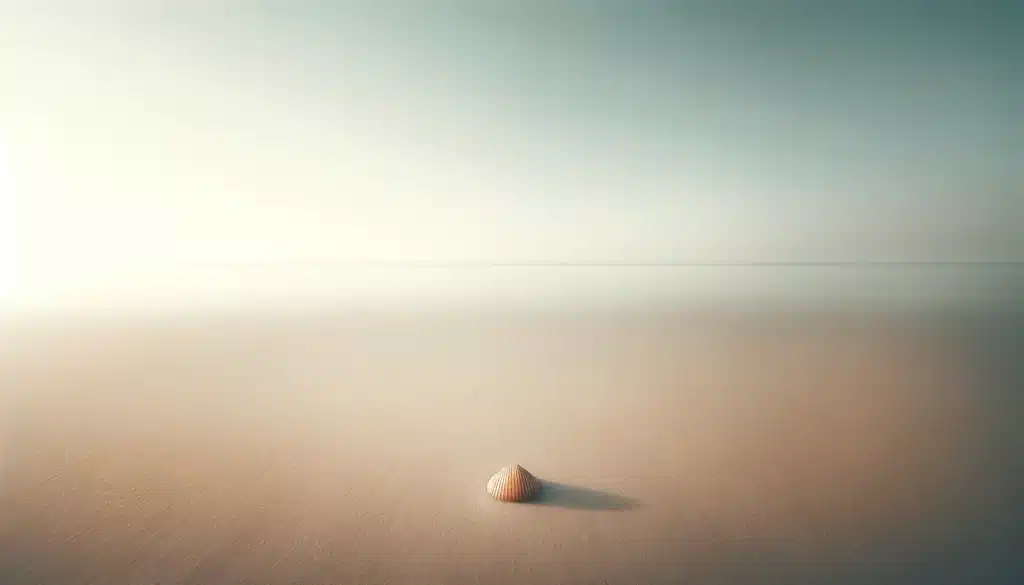
FAQs About the Tips for Minimalist Photography
How to be a minimalist photographer?
To become a minimalist photographer, start by selecting scenes with fewer details and distractions. Emphasize clear, clean visuals and concentrate on the essence of what you want to capture. Practice the art of excluding unnecessary features to highlight the central theme more effectively.
How do I make my photos look minimalist?
To achieve a minimalist look, choose settings that are uncluttered and use a monochrome tone to maintain a cohesive visual feel. emphasis on one main detail and use editing software to refine and define that detail. Always make sure it stands out against a subdued setting.
What is a minimalist in photography?
A minimalist in photography is someone who emphasizes a less is more approach in their visuals. This photographer aims to convey a message or emotion through streamlined and reduced visual content, focusing heavily on the power of understatement.
What are you reducing in minimalist photography?
In minimalist photography, you are reducing the clutter of unnecessary details and distractions in your visuals. This involves focusing on essential features and minimizing the use of busy textures or excessive contrasting tones to maintain a serene and impactful visual narrative.
Conclusion
In my journey with minimalist photography, I’ve found that embracing this style has not only refined my technical skills but also deepened my appreciation for the often overlooked details in everyday life. For instance, capturing the serene symmetry of an empty street at dawn, with only the gentle gradient of the sky above, has taught me the power of restraint and the beauty that lies in the understated.
If you’re inspired to explore this compelling style of photography, I encourage you to check out our detailed courses. Whether you’re looking to master Photoshop or Lightroom, our comprehensive Photoshop course and Lightroom course provide all the tools and techniques you’ll need to elevate your photography. Dive into these courses today and start capturing the essence of minimalism through your aperture!
Have a nice photoshoot!
Learn more about
Course
Light Effect Photoshop
Lightroom Course 2025
Adobe Photoshop Course 2025
Photo Editing Course


Download Your Free Guide Now!
Discover the secrets of photography with our printable guide! Master essential techniques like aperture, shutter speed, and ISO to create stunning images. Get your free printable PDF now and start turning your snapshots into masterpieces!




